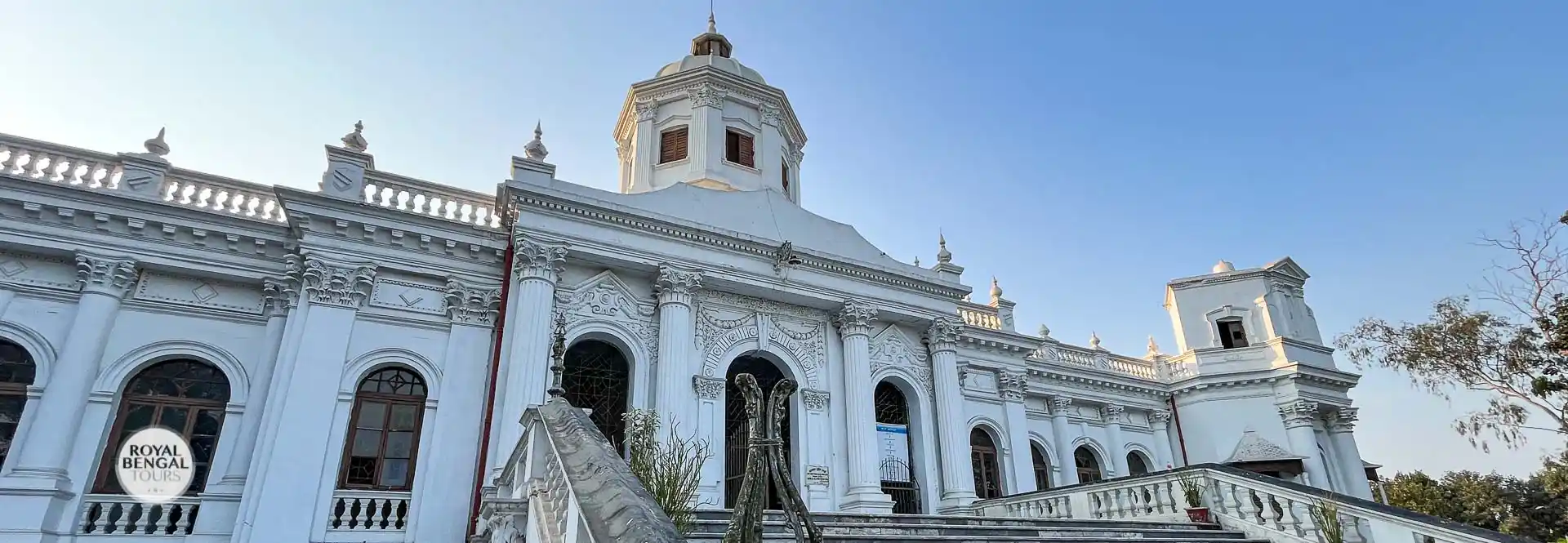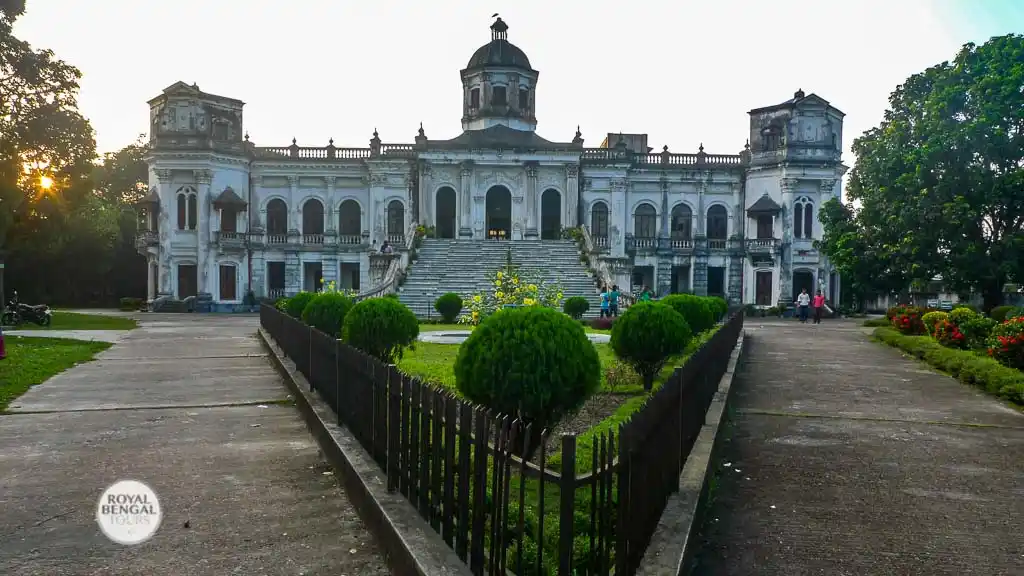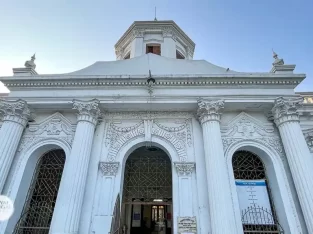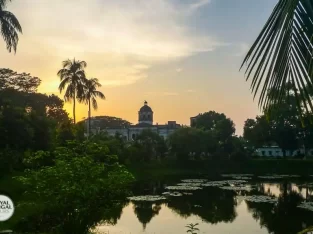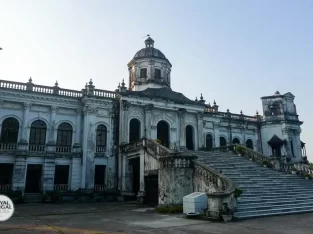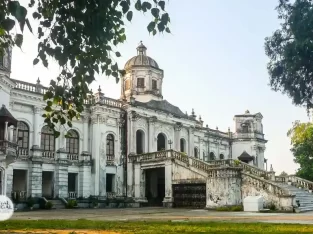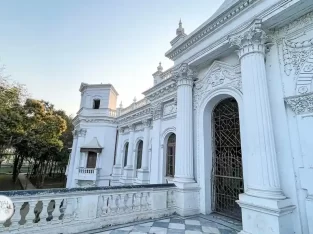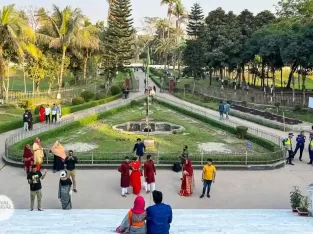The standout feature of the palace is its front facade, which has an imposing staircase made of imported white marble leading to the upper floor. The balustrades on either side of the stairs used to have sculptures of classical Roman figures made of marble, but they have been lost over time. The front porch has four Corinthian columns supporting a triangular gable with intricate carvings.
The palace has about 22 rooms on two levels, which are set up around a central corridor. The chambers have high ceilings with wooden beams and panels with floral designs on them. The windows have curved frames and stained-glass panels that show scenes from Hindu mythology.
The central part of the roof of the palace looks like the Ahsan Manzil in Dhaka because it has a conical dome with ribbed details. The neck of the dome is shaped like an eight-sided pentagon, and it is held up by thin columns with semi-Corinthian capitals.
Even though Tajhat Palace is culturally and historically important, it has been ignored and has been falling apart over the years. The palace’s structure has gotten worse because it hasn’t been maintained and preserved well enough. This is shown by the cracks that have appeared in its walls and ceilings. It is imperative that expeditious measures are taken by the government and relevant authorities to conserve this invaluable monument and guarantee its perpetuation as a symbol of Bengal’s opulent cultural heritage for posterity.
In conclusion, the Tajhat Palace stands out as an important part of Bengal’s architectural history. The statement talks about how important Bengal’s historical and cultural heritage is and how important it is to keep these treasures safe for future generations. The Tajhat Palace is a beautiful building that makes a lasting impression on visitors. It helps them understand and appreciate the cultural and historical importance of the area.
Tajhat Palace Museum Opening and Closing Hours During Summer: April to September
Friday: 10 AM to 6 PM (1 PM to 2 PM prayer and lunch break)
Saturday: 10:00 AM to 6:00 PM
Sunday: Closed
Monday: 2:00 PM to 6:00 PM
Tuesday – Thursday: 10:00 AM to 6:00 PM
Tajhat Palace Museum Opening and Closing Hours During Winter: October to March
Friday: 9 AM to 5 PM (1 PM to 2 PM prayer and lunch break)
Saturday: 9:00 AM to 5:00 PM
Sunday: Closed
Monday: 1:30 PM to 5:00 PM
Tuesday – Thursday: 9:00 AM to 5:00 PM
Tajhat Palace Museum Opening and Closing Hours During Ramadan:
Friday: 2.00 PM to 4.00 PM
Saturday: 10:00 AM to 4:00 PM
Sunday: Closed
Monday – Thursday: 10:00 AM to 4:00 PM
Ramadan visiting hours may vary depending on which season Ramadan falls in.
Usually, the museum remains closed on Sundays and any other public holidays during both summer and winter.
The ticket counter will be closed at least 30 minutes before the museum closing time.
|
Nationality
|
Ticket Price
|
|
Students (Bangladeshi) up to the secondary level
|
5.00 taka
|
|
Bangladeshi
|
20.00 Taka
|
|
Visitors from SAARC member countries
|
100.00 Taka
|
|
And any other foreign nationalities
|
200.00 Taka
|
No entry fee is required for disabled persons and children under three years.
The South Asian Association for Regional Cooperation (SAARC) has eight member countries: Bangladesh, Afghanistan, Nepal, Bhutan, India, the Maldives, Pakistan, and Sri Lanka.

